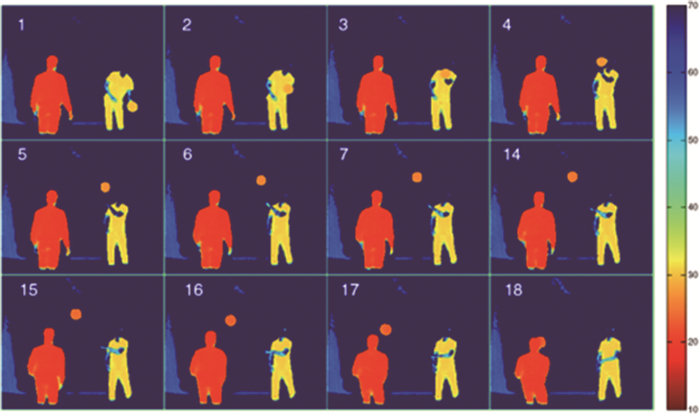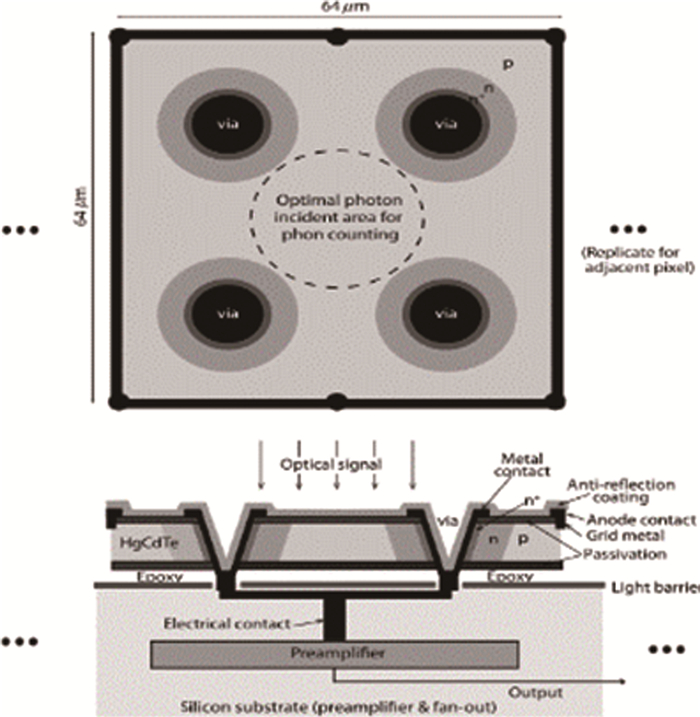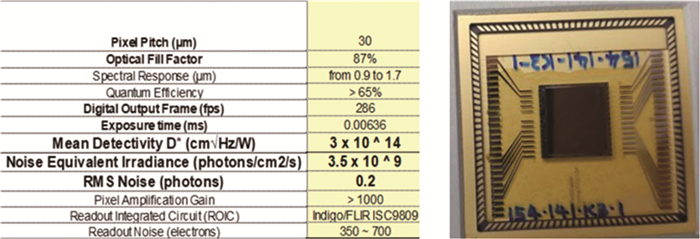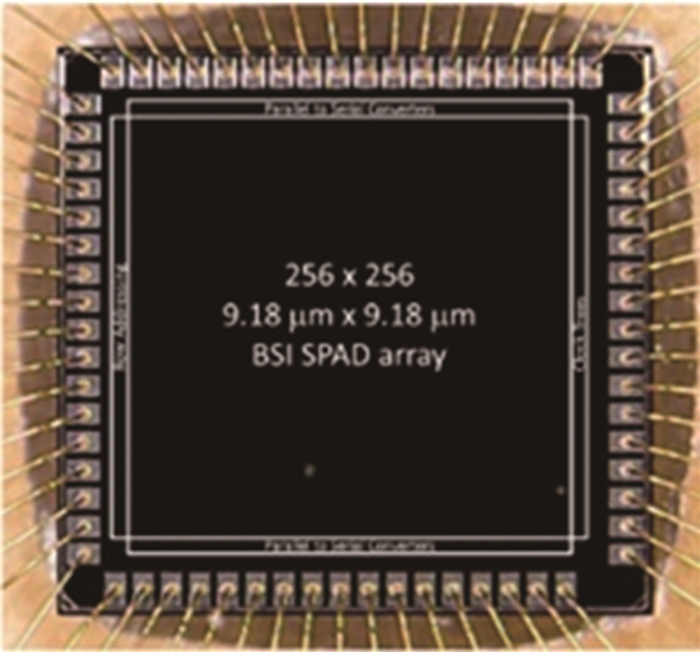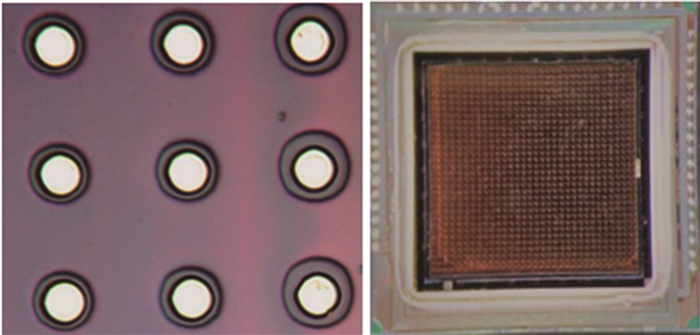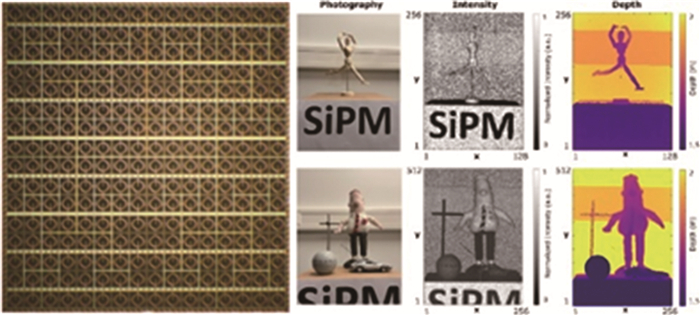HTML
-
近年来,随着量产车上自动辅助驾驶系统的需求不断增加,自动驾驶技术也在飞速发展。在自动驾驶的领域,激光雷达(light detection and ranging, LiDAR)作为一种新发展起来的探测感知设备,它具有以下优势:(1)能够识别一定遮蔽和伪装的物体;(2)探测精度高,一般在厘米级别以内;(3)能够精确获得周围目标的速度、距离、高度等信息;(4)抗干扰能力强。因此能够准确感知周边的环境,不会误判和漏判车辆周围的障碍物。激光雷达在汽车领域的高速发展,推动了光电探测器件的大量应用。目前, 激光雷达在不同系统应用场景下主要使用光电倍增管(photomultiplier tube, PMT)、雪崩光电二极管(avalanche photodiode,APD)、硅光电倍增管(Si PMT)作为探测器件[1]。APD探测器是成像激光雷达目前最有前景的探测器,本文作者综述了APD阵列的国内外发展情况,对于本领域的研究者具有很好的参考价值。
-
APD探测器所加的反偏电压小于击穿电压时,工作在线性模式(linear-mode, LM)[2],此时,探测器的输出电流与入射光强近似线性相关;当所加的反偏电压高于击穿电压时,探测器工作在盖格模式(Geiger-mode, GM)[3],APD雪崩电离程度更高,能够响应单个入射的光子,适用于极微弱光强的检测。
APD探测器根据探测器的规模经历了单元、线列、小面阵到大面阵探测的发展历程,受限于单元探测器的面积,其应用存在诸多限制,但随着压缩感知理论的成熟和图像处理算法的研究,单元探测技术仍然有应用发展空间。APD线列、阵列探测器是目前激光雷达用探测器的主流发展方向之一,其主要由APD探测器件阵列和读出电路(read out integrated circuit, ROIC)两部分构成。外界环境噪声的影响、APD阵列探测器像素单元的一致性、ROIC通道间的串扰是影响其性能和规模的关键因素。
-
美国先进科学概念公司基于LM APD阵列研制了TigerEYE和DragonEYE闪光激光雷达。
2004年,采用探测器为128×128的线性InGaAs APD阵列的单脉冲闪光激光雷达TigerEYE问世[4], 它将可进行模拟和数字处理的多功能读出电路凸点键合到线性模式雪崩光电二极管阵列上,ROIC的每个单元都包含独立计算从发射激光脉冲到捕获反射脉冲光束的时间的电路,脉冲激光波长为1570 nm,脉宽为5 ns,工作重频为1 Hz~20 Hz,探测距离为0.06 km~1.1 km,系统体积为11 cm×11.2 cm×12.1 cm,重量小于2 kg。
2009年,得到空间探索公司支持的、另一款采用探测器为128×128的线性InGaAs APD阵列的闪光激光雷达DragonEYE问世[5]。DragonEYE系统安装在STS-127(奋进者号)和STS-133(发现号)航天飞机上,成功捕捉到3维图像。接收光学系统焦距为17 mm,视场角为45°,帧频最高为30 frame/s,体积为11.2 cm×13.2 cm× 11.9 cm,重量为3 kg,最大探测距离为2 km,测距精度为0.1 m。
2012年,美国雷神公司为各种应用开发了一系列高性能的脉冲激光雷达雪崩光电二极管阵列,如图 1所示。碲镉汞红外雪崩光电二极管阵列的尺寸包括32×2、10×10、2×128、64×48、4×256和256×256[6]。美国国家航空航天局自主精确着陆和危险探测回避技术项目所使用的是256×256雪崩探测器阵列,具有70%的量子效率[7]。

Figure 1. Linear mode avalanche photodiode array[6]
2014年,美国DRS公司设计并制作了基于高密度垂直集成结构的2×8线性模式HgCdTe APD阵列。该阵列可以探测从可见光到中频中波红外(medium wavelength infrared, MWIR)的光子[8];还设计制作了一个像素间距为80 μm的4×4 HgCdTe APD阵列,用于二氧化碳闪光激光雷达[9-10]; 此外,设计了用于近红外门控主动/被动成像的128×128中波HgCdTe APD阵列, 该阵列的探测距离可达9 km,获得了小于10个光子的灵敏度[11]。法国实验室CEA/LETI[2]研制了一台3维脉冲激光雷达,阵列长度为320×256,间距为30 μm。能够存储每个像素中一个激光脉冲的飞行时间(time of flight, TOF)和强度[12], 脉冲激光波长为1570 nm,脉宽为8 ns,最大功率为8 mJ, APD阵列在6 V的低反向偏置电压下,获得了23倍的平均增益, 探测距离超过40 m,距离分辨率约为15 cm。从3维视频中提取的距离图像如图 2所示。
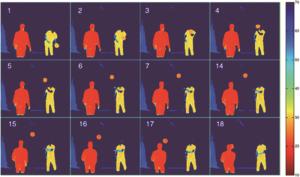
Figure 2. Sequence of range image[12]
2019年,美国国家航空航天局的SUN等人开发了一套线性模式单光计数HgCdTe APD焦平面阵列,HgCdTe APD阵列使用高密度垂直集成光电二极管架构,如图 3所示[13]。ROIC中的APD前置放大器直接安装在HgCdTe APD阵列下方,以最大限度地减少输入杂散电容。在ROIC和HgCdTe APD阵列之间还有一个挡光板,以最大限度地减少ROIC单元电路对发射的光子的检测。集成探测器(含制冷器)组件的质量为0.8 kg,功耗7 W左右,2×8的HgCdTe APD焦平面(focal plane array, FPA)的尺寸为64 μm×64 μm,像素间距为64 μm,具有0.9 μm~4.3 μm波长的光谱响应,在250 kHz的暗计数率下,光子探测效率高达70%,时间抖动小于0.5 ns。微透镜阵列与APD阵列集成在一起,将探测器的填充因子提高到接近100%。在APD增益高达1900倍时,HgCdTe APD的实际暗电流小于3万个电子/(s·pixel),探测器的模拟输出具有6 ns半峰全宽的单光子脉冲响应宽度。
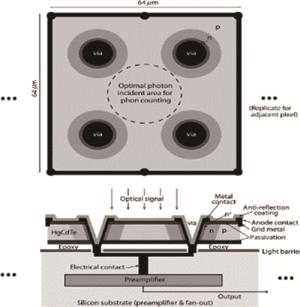
Figure 3. Diagram of HgCdTe APD[13]
2020年,美国国家航空航天局兰利研究中心的PRASAD等人开发出一种创新的、非致冷的光子传感集成电路(photon sensing integrated circuit, PSIC)异质结光晶体管(heterojunction phototransistor, HPT)器件[14]。图 4展示了FPA的规格和集成的样品。这种基于InGaAs的PSIC HPT设备是一种室温检测器和成像器,具有320×256规模和30 μm尺寸的像素,并在0.9 μm~1.7 μm的短波红外(short wave infrared, SWIR) 光谱区域工作。它是一种连续运行(即零恢复时间)、零过量噪声和线性模式(即能够表示光子数)的光子传感探测器和成像器。通过HPT放大而不是传统的雪崩倍增机制,这种InGaAs HPT同时表现出大于1000的信号放大增益,即增益高于20倍,暗电流面密度低于InGaAs APD的1/10。当前的HPT表现出更高的速度、更高的增益、更低的暗电流和噪声,实现了光子检测的最高信噪比。
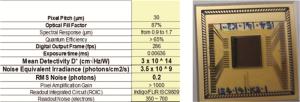
Figure 4. Specifications of focal plane detector and the integrated samples[14]
2021年,美国国家航空航天局的SUN等人开发了一种新型太空激光雷达[15], 它使用了2×8线性模式光子计数的HgCdTe APD焦平面阵列探测器, 如图 5所示[15],提供了0.9 μm~4.3 μm波长的近量子限制的接收器灵敏度。通过调整激光功率和APD增益,可以提供6个数量级的动态范围,能够测量从数百公里到目标表面附近的范围和表面反射率。
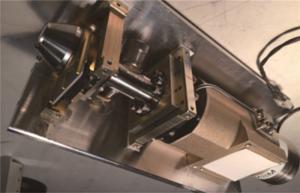
Figure 5. 2×8 HgCdTe APD detector cooler assembly[15]
-
GM APD阵列可实现单光子探测的灵敏度,具有高的时间分辨率和距离分辨率、较高的探测效率、较低的功耗、体积小、增益高等特点,可以满足远距离高分辨率3维成像激光雷达的应用需求。
1998~2003年, 林肯实验室采用混合集成技术连续研制了GEN-Ⅰ[16]、GEN-Ⅱ[17]、GEN-Ⅲ[18]激光雷达。如图 6所示,GEN-Ⅲ将32×32 APD阵列和32×32 CMOS计时电路阵列混合集成。2010年,该实验室采用32×128的InP/InGaAsP盖革APD阵列研制出机载3维成像激光雷达,能够全天时在3 km高空对地面进行2000 km2/h的快速3维成像,距离精度为0.3 m[19]。2015年,该实验室研究出近红外波段响应性能更佳的256×256像元InP/InGaAs APD阵列[20-22]。他们的长期目标是开发具有1024×1024的GM APD阵列[23]。
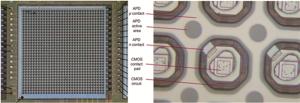
Figure 6. Photomicrograph of hybrid integrated APD/CMOS device[18]
2014年,瑞士洛桑联邦理工大学报道了一种基于0.18 μm CMOS工艺的202×96像元SPAD阵列片上系统(system on chip, SOC)探测器[24]。该芯片的核心由两个线性像素阵列组成:第1个阵列用于执行场景的被动成像,第2个阵列用于主动多回波TOF成像,SOC还包括一个64通道12位TDC,768 kbit SRAM存储器。在强太阳背景光下以10 frame/s的速度在100 m范围内获得了实时、准确的距离图像,分辨率为202 pixel×96 pixel。图 7a展示了其系统芯片架构; 图 7b为探测器的芯片照片,其中左半部分为数字信号处理(digital signal processing, DSP)电路,右半部分为单光子雪崩二极管(sigte photon avalanche diode, SPAD)像元以及时间数字转换(time to aigital couverter, TDC)电路; 图 7c最上面部分为颜色编码TOF距离成像,中间部分为信号稳定性测量结果,最下面为摄像头拍出的照片,可以清晰辨别出图中的人物和车子。

Figure 7. SOC detector[24]
2019年,英国爱丁堡大学的HUTCHINGS等人报道了一种集成在3维叠层90 nm 1P4M/40 nm 1P8M工艺中的256×256 SPAD传感器(如图 8所示)用于闪光探测、激光测距或高速直接TOF 3维成像[25]。传感器底层由64×64个间距为36.72 μm的模块化光子处理单元组成,这些单元由共享的4×4个SPAD以9.18 μm的间距和51%的填充系数运行。
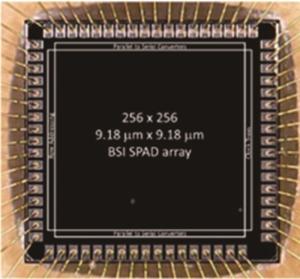
Figure 8. Array photo[25]
2020年,美国Acqubit公司的YUAN等人开发了一种具有衬底去除结构的GaAs基InGaP APD[26],制作了32×32 GM APD阵列,并与ROIC进行了集成,芯片尺寸约为3.75 mm×3.75 mm,比显微镜的正常视场(field of view, FOV)大。在室温下,在50 μm器件上测得的暗电流小于10 pA。在532 nm处,防反(anti reflective, AR)增透膜器件的外部量子效率约为54%。图 9为其焦平面图片。

Figure 9. 32×32 array and focal plane[26]
2022年,瑞士洛桑联邦理工学院的ZHAO等人提出了一种基于标准55 nm单片集成(bipolar-CMOS-DMOS, BCD)技术的模拟Si PMT,并且将Si PMT集成到带有时间相关单光子计数(time-correlated single photon counting, TCSPC)模块的LiDAR系统中[27]。Si PMT由16×16单光子雪崩二极管(SPAD)组成,尺寸为0.29 mm×0.32 mm。每个SPAD单元由一个3.3 V的单片集成MOS管被动熄灭,在5 V偏置电压下测得的增益为3.4×105。在3.3 V偏置电压下,单光子计时分辨率为185 ps,多光子计时分辨率为120 ps。在室内环境光条件下,25 m距离测量时的精度为2 cm和2 mm。如图 10所示,是在同轴扫描的情况下,128×256和256×512分辨率的复杂场景的强度和深度图像。
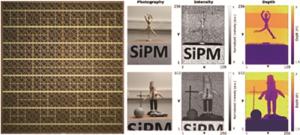
Figure 10. Si PMT array diagram and depth intensity image[27]
1.1. LM APD阵列研究现状
1.2. GM APD阵列研究现状
-
2010年,电子科技大学将4×4个光纤耦合的离散APD用于闪光激光雷达[28], 探测范围为1.5 km,测量精度为15 cm。
2013年,哈尔滨工业大学采用美国Pacific Silicon Sensor公司生产的Si基阵列APD探测器,设计了8×8的LM APD阵列激光雷达系统[29], 探测器像元数8×8,像元面积205 μm2。
2015年,桂林理工大学提出了一种闪光激光雷达GLiDAR-Ⅱ,它采用了美国Pacific Silicon Sensor公司生产的AD500-8TO52S2的5×5光纤耦合的分立式硅基APD[30-31]。使用光纤耦合的APD,可以有效地降低相邻APD的电串扰,并可以根据实际应用需求方便地增加APD的数量, 光纤与雪崩光电二极管之间的光耦合效率高达90%。APD工作在线性模式,在760 nm~910 nm波长范围内量子效率大于80%。GLiDAR-Ⅱ的视场角为1.2°×1.2°,探测范围只有20 m,测距精度为5 cm。
2016年,南京大学开发了一种新型的激光雷达系统,该系统使用4个LM APD探测器[32]。根据调制和多路复用技术,仅利用1×4个LM APD探测器即可实现每帧256个像素的检测,脉冲激光闪光激光雷达的横向分辨率约为15 cm,测距精度约为4 cm。
2018年,西南技术物理研究所研制了一种64×64 LM InGaAs/InP雪崩光电二极管阵列,与专用互补金属氧化物半导体(complementary metal oxide semiconductor, CMOS)集成电路通过In柱倒装互联工艺混合集成的方式形成了LM-APD-FPA器件[33]。该阵列的最小探测功率为400 nW,读出电路的时间分辨率为1 ns, 脉冲激光波长为1064 nm,脉宽为5 ns,单脉冲能量为100 mJ,重复频率为20 Hz, 检测范围为1 km,精度为15 cm。
2018年,北京理工大学提出了一种受复眼和人眼启发的新型脉冲激光3维成像系统[34-36], 如图 11所示。接收光学系统由18×30个微透镜组成,分布在曲面上,模拟复眼的大视场特征,整个视场达到52°。图中,FPGA(field-programmable gate array)是现场可编程门阵列,DOE(diffractive optical element)为衍射光学元件,NUMLA(non-uniform microlens array)为非均匀微透镜阵列。
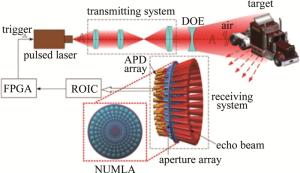
Figure 11. Schematic diagram of pulse laser flash LiDAR developed by Beijing University of Technology[34]
2020年,重庆光电技术研究所设计了128×2线性模式硅基雪崩光电二极管阵列[37]。读出电路采用单片集成技术,将前置放大电路、TDC计时电路和ADC等功能模块集成在单一硅片上。整个LM APD焦平面探测器可实现128×2阵列规模的激光信号并行检测。最小时间分辨率可达0.25 ns,APD焦平面探测器的非均匀性为7%,串扰为0.15%。
-
2016年,哈尔滨工业大学研制的闪光激光雷达采用中国电子科技集团公司第四十四研究所研制出的32×32像元的InGaAsGm-APD焦平面探测器[38]。脉冲激光波长为1570 nm,脉冲能量为2 mJ,脉冲宽度小于10 ns, 测量范围距离可达3.9 km,帧速率为1 kHz。
2019年,中国电子科技集团公司第三十八研究所研制了一种基于64×64 InGaAs GM雪崩光电二极管阵列的闪光激光雷达[39],其波长为1064 nm,读出电路的时间分辨率为2 ns。实现了对大约300 m外的目标进行成像。
目前国内对于Si PMT器件的研究报道比较少,2018年,华中科技大学基于0.18 μm标准CMOS工艺研制了Si PMT器件[40];2020年,北京师范大学新器件实验室成功研制出微单元尺寸为15 μm、有效面积为9 mm2的外延电阻淬灭型硅光电倍增器[41]。
2.1. LM APD阵列研究现状
2.2. GM APD阵列研究现状
-
表 1和表 2中对国内外LM APD阵列和GM APD阵列的指标进行了对比。国外对激光雷达的研究较早,在探测器技术方面有较多的技术储备,目前研究的方向主要是提高探测器规模和成像性能,并实现大面阵、小型化、多波段、高帧频及低功耗。在探测器技术研究方面,国内与国外仍然存在着一定的差距,由于大规模的APD阵列探测器对各方面技术的要求高,在制作上更难实现,特别是由于半导体工艺的限制以及国外的技术封锁,国内研究单位多集中于线列和小面阵探测的阶段,需要进一步推进大面阵APD阵列探测器研制,提高激光雷达的集成性,实现快速3维成像。
国外[4] 国外[6] 国外[2] 国外[13, 15] 国内[27] 国内[32] 国内[36] 年份 2004 2012 2012 2021 2010 2018 2020 波长 1570 nm 1500 nm 1570 nm 0.9 μm~4.3 μm 1064 nm 1064 nm 905 nm 材料 InGaAs HgCdTe HgCdTe HgCdTe — InGaAs/InP Si 阵列规模 128×128 256×256 320×256 2×8 4×4 64×64 128×2 探测距离 0.06 km~1.1 km 7 km~10 km 40 m 1 m~10 km 1.5 km 1 km — 探测精度 15 cm 5 cm@1 km 11 cm 0.05 m 15 cm 15 cm — 像元间距 — — — 64 μm — — 150 μm Table 1. Comparison of LM APD array indicators at home and abroad
国外[18] 国外[19] 国外[20-22] 国外[25] 国外[27] 国内[38] 国内[39] 年份 2002 2010 2015 2019 2022 2016 2019 波长 532 nm 1500 nm — 671 nm 550 nm 1570 nm 1064 nm 材料 — InP — — Si InGaAs InGaAs 阵列规模 32×32 32×128 256×256 256×256 16×16 32×32 64×64 探测距离 500 m 3 km 3.5 km 50 m 25 m 3.9 km 300 m 探测精度 15 cm 0.3 m — — 2 cm/2 mm 0.12 m — 像元间距 — — 25 μm 9.18 μm 18.5 μm — — Table 2. Comparison of GM APD array indicators at home and abroad
-
随着激光器和探测器技术的不断发展,成像激光雷达逐渐地向小面阵扫描、线阵推扫及面阵闪光成像发展,成像速度越来越快;随着光电探测技术的成熟,探测灵敏度越来越高,使得激光雷达的体积、重量、功率进一步减小[42];这就要求探测器技术朝着增大阵列规模,减小像元间距,提高多功能集成度,丰富探测波段,超低功耗的方向发展。因为激光容易受到大气状况的干扰,现代探测技术的发展趋向于多种传感器的融合探测获取更丰富的目标信息,3维成像趋向于主动多回波探测和被动成像相结合。

 Map
Map


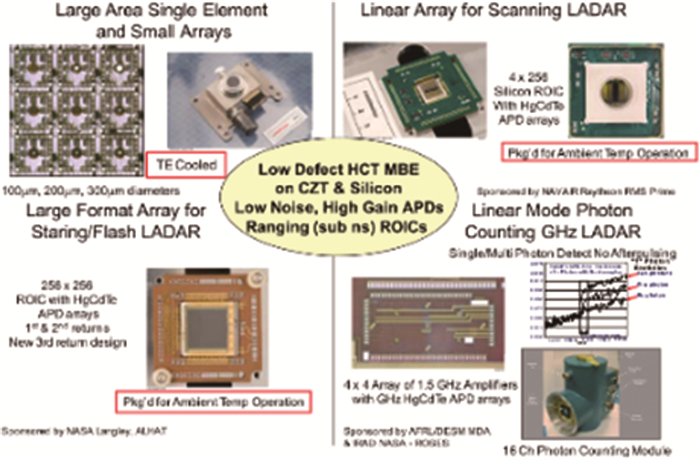

 DownLoad:
DownLoad:
